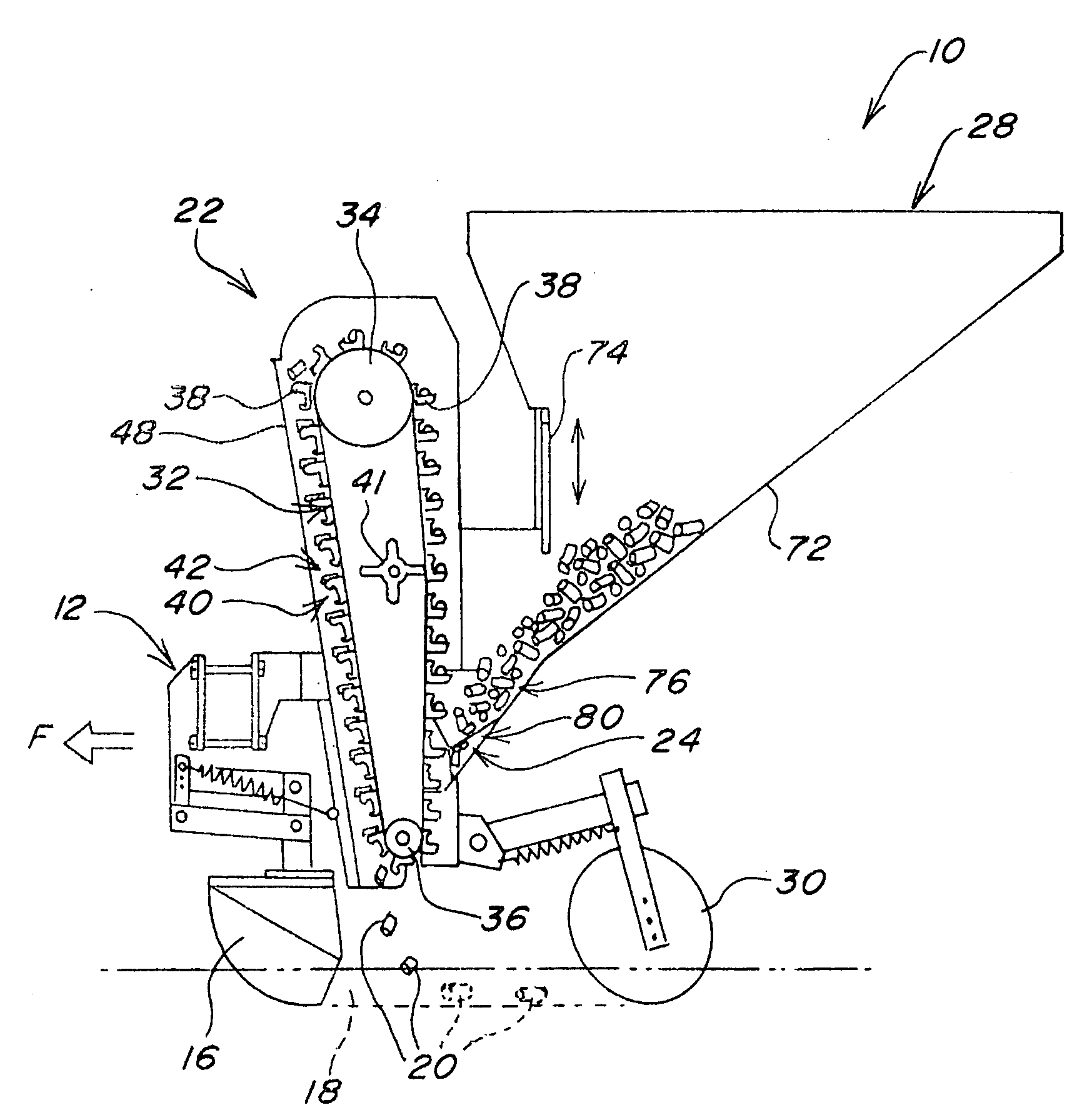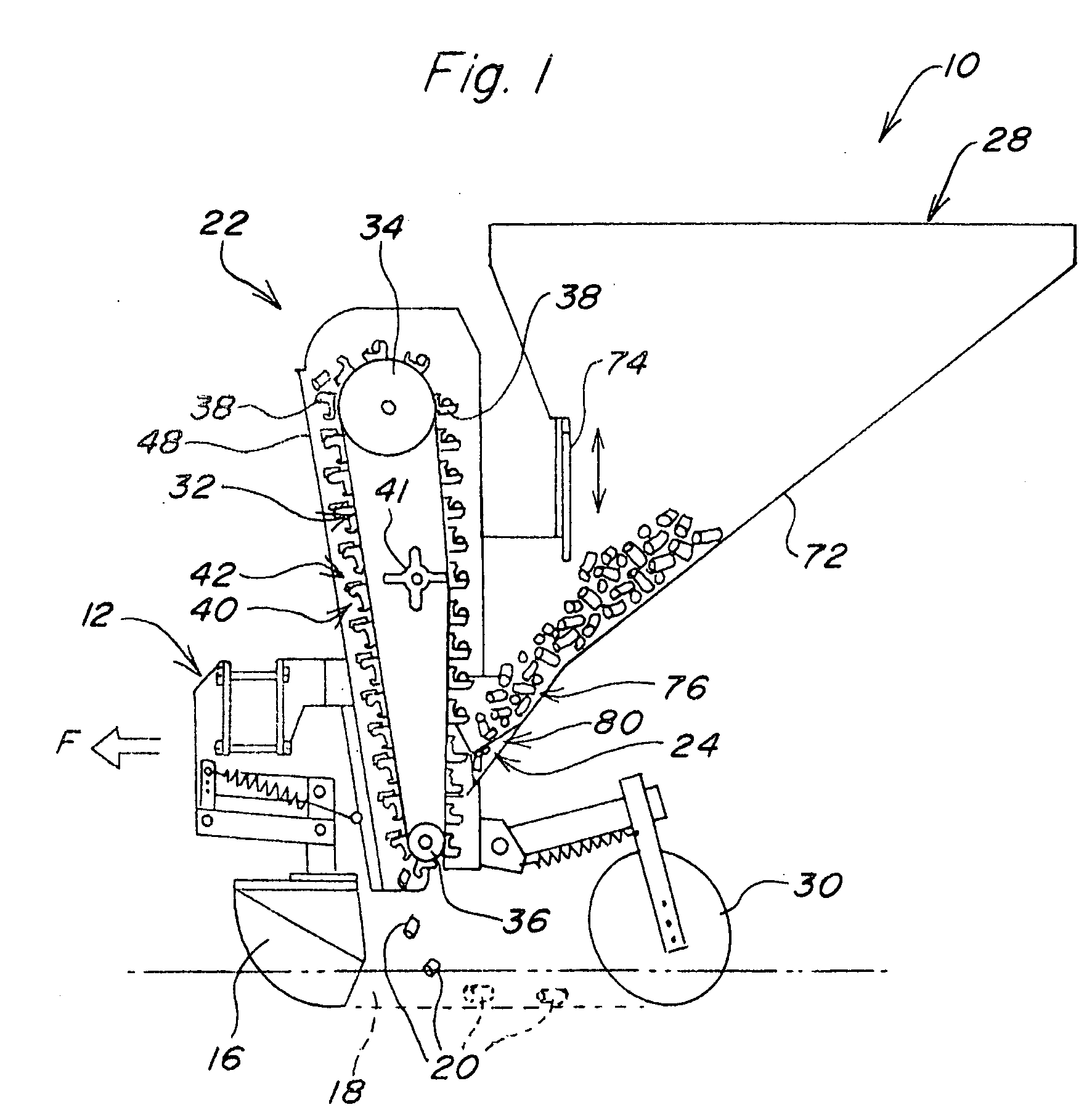Planter with Cup Belt Meter
a planter and belt technology, applied in the field of planters, can solve the problems of increased churning, damage to seeds, and deterioration of population control, and achieve the effect of softening the impact of seeds and facilitating seed entry
- Summary
- Abstract
- Description
- Claims
- Application Information
AI Technical Summary
Benefits of technology
Problems solved by technology
Method used
Image
Examples
Embodiment Construction
[0016]Referring to FIG. 1, therein is shown a cup belt planter 10 having a main frame 12 supported for forward movement over the ground by a towing implement (not shown). The planter 10 includes an opener shoe or furrowing device 16 depending from the frame 12 for forming a seed-receiving trench or furrow 18 in the ground. Seeds 20 are deposited in the furrow 18 by a row unit or cup belt metering system 22 which picks up the seeds 20 from a seed puddle 24 at bottom of a seed hopper 28 supported on the frame 12. A plurality of the metering systems 22 may be supported at transversely spaced locations on the frame 12. A closing wheel or disk 30 closes the furrow 18 over the seed 20 deposited by the metering system 22. As shown, the planter is similar to a conventional potato planter with the exception of the metering system 22, the hopper 28 and the area of the seed puddle 24.
[0017]The metering system 22 includes an endless belt or chain structure 32 trained around an upper pulley or g...
PUM
 Login to View More
Login to View More Abstract
Description
Claims
Application Information
 Login to View More
Login to View More - R&D
- Intellectual Property
- Life Sciences
- Materials
- Tech Scout
- Unparalleled Data Quality
- Higher Quality Content
- 60% Fewer Hallucinations
Browse by: Latest US Patents, China's latest patents, Technical Efficacy Thesaurus, Application Domain, Technology Topic, Popular Technical Reports.
© 2025 PatSnap. All rights reserved.Legal|Privacy policy|Modern Slavery Act Transparency Statement|Sitemap|About US| Contact US: help@patsnap.com



